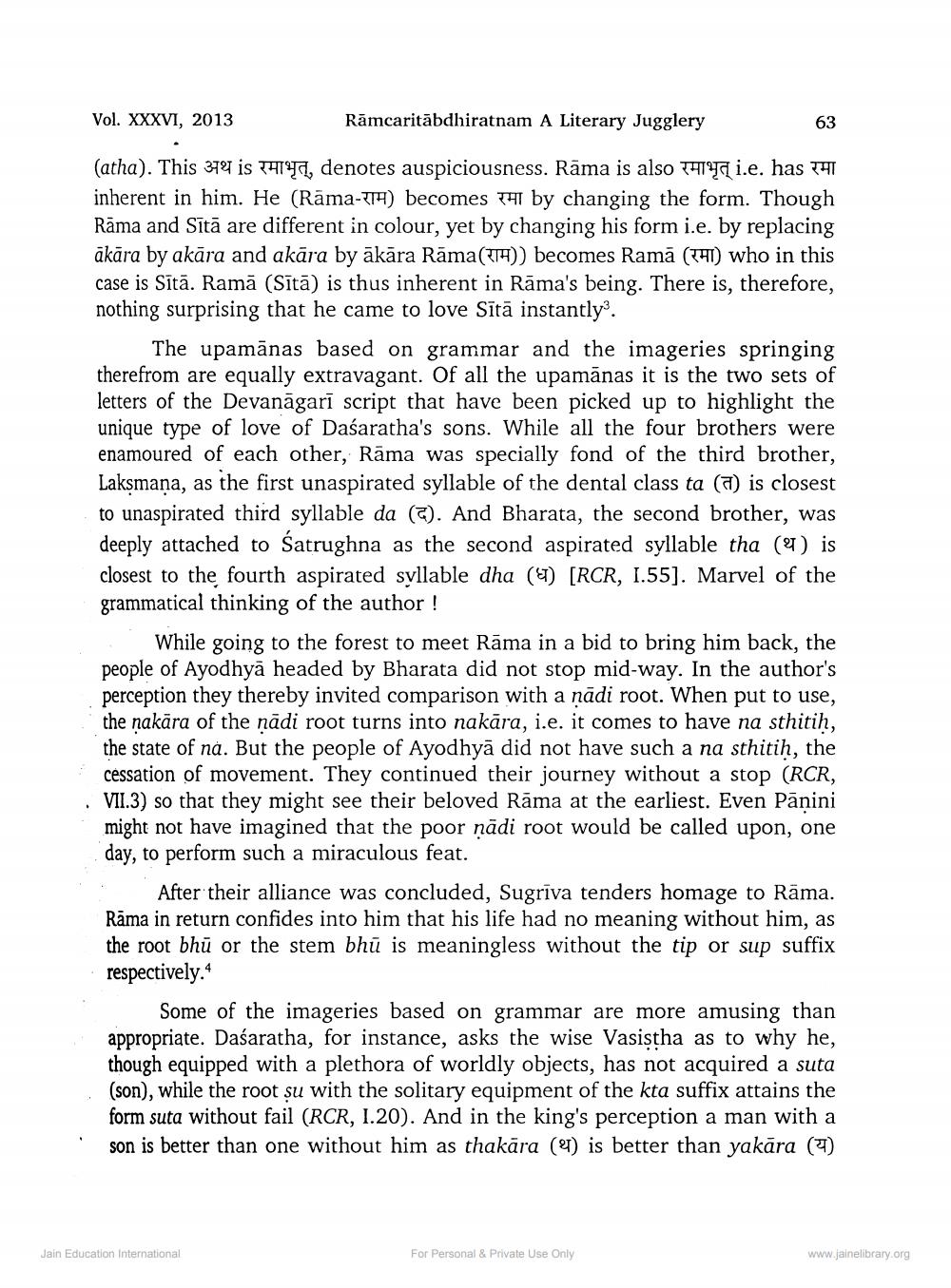________________
Vol. XXXVI, 2013
Ramcaritābdhiratnam A Literary Jugglery
(atha). This अथ is रमाभृत्, denotes auspiciousness. Rāma is also रमाभृत् i.e. has रमा inherent in him. He (Rama-H) becomes by changing the form. Though Rāma and Sītā are different in colour, yet by changing his form i.e. by replacing ākāra by akāra and akāra by ākāra Rāma()) becomes Ramā (4) who in this case is Sītā. Ramā (Sītā) is thus inherent in Rama's being. There is, therefore, nothing surprising that he came to love Sītā instantly3.
The upamānas based on grammar and the imageries springing therefrom are equally extravagant. Of all the upamānas it is the two sets of letters of the Devanāgarī script that have been picked up to highlight the unique type of love of Dasaratha's sons. While all the four brothers were enamoured of each other, Rāma was specially fond of the third brother, Lakṣmaṇa, as the first unaspirated syllable of the dental class ta (7) is closest to unaspirated third syllable da (). And Bharata, the second brother, was deeply attached to Śatrughna as the second aspirated syllable tha () is closest to the fourth aspirated syllable dha () [RCR, 1.55]. Marvel of the grammatical thinking of the author!
63
While going to the forest to meet Rāma in a bid to bring him back, the people of Ayodhya headed by Bharata did not stop mid-way. In the author's perception they thereby invited comparison with a ṇādi root. When put to use, the ṇakara of the ṇādi root turns into nakāra, i.e. it comes to have na sthitiḥ, the state of na. But the people of Ayodhya did not have such a na sthitiḥ, the cessation of movement. They continued their journey without a stop (RCR, VII.3) so that they might see their beloved Rāma at the earliest. Even Panini might not have imagined that the poor ṇādi root would be called upon, one day, to perform such a miraculous feat.
After their alliance was concluded, Sugrīva tenders homage to Rāma. Rāma in return confides into him that his life had no meaning without him, as the root bhu or the stem bhū is meaningless without the tip or sup suffix respectively.4
Some of the imageries based on grammar are more amusing than appropriate. Dasaratha, for instance, asks the wise Vasistha as to why he, though equipped with a plethora of worldly objects, has not acquired a suta (son), while the root șu with the solitary equipment of the kta suffix attains the form suta without fail (RCR, 1.20). And in the king's perception a man with a son is better than one without him as thakāra (4) is better than yakāra (4)
Jain Education International
For Personal & Private Use Only
www.jainelibrary.org




